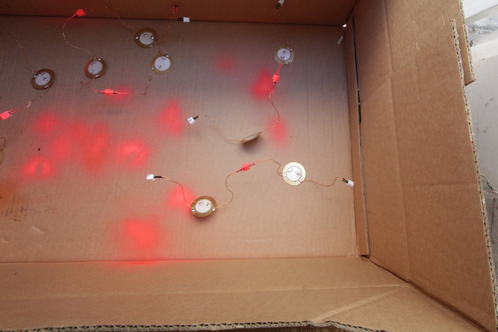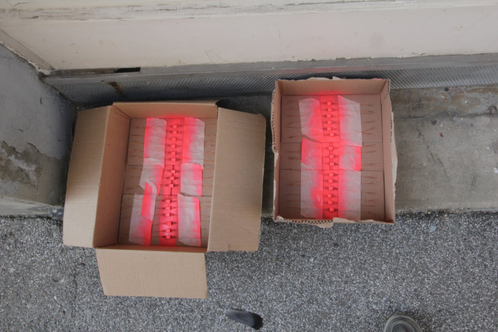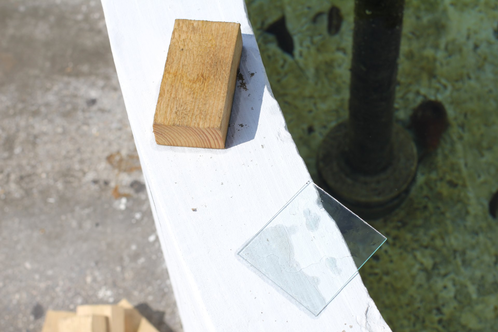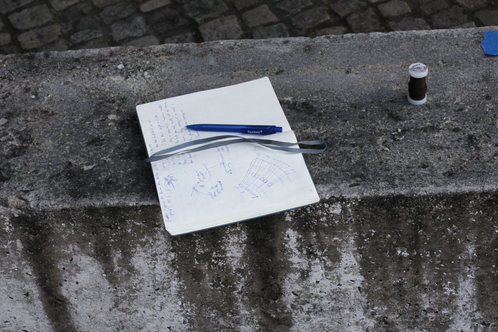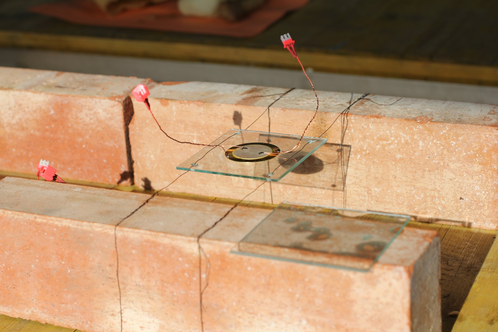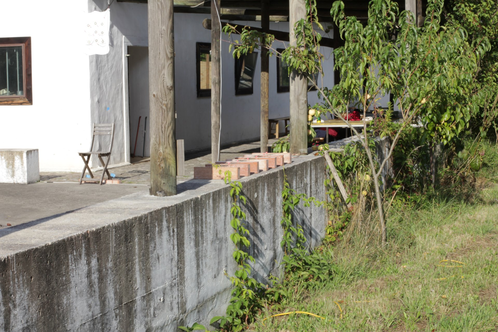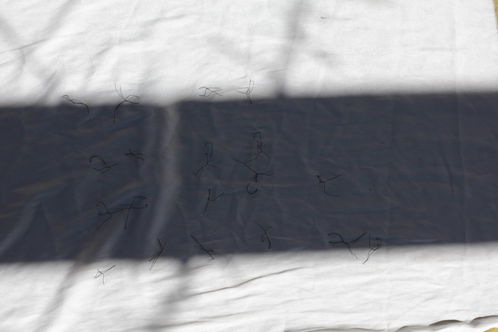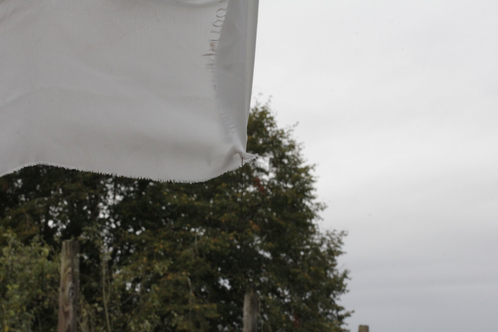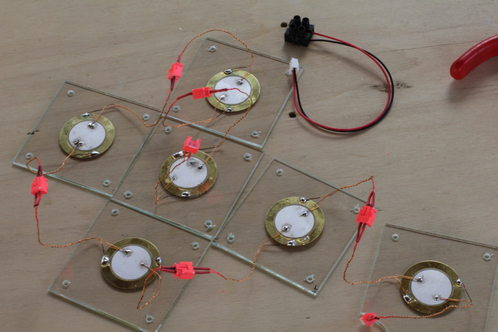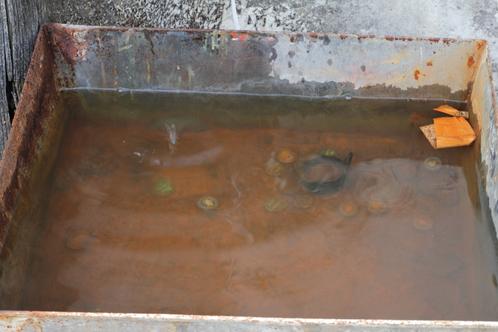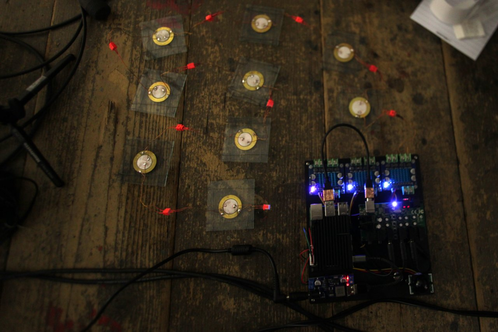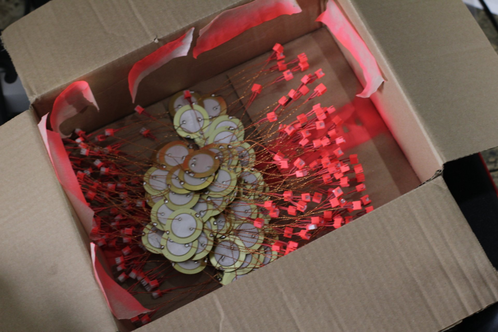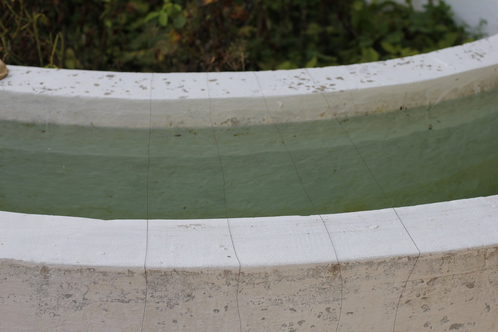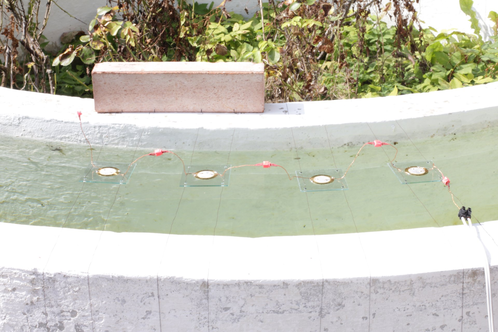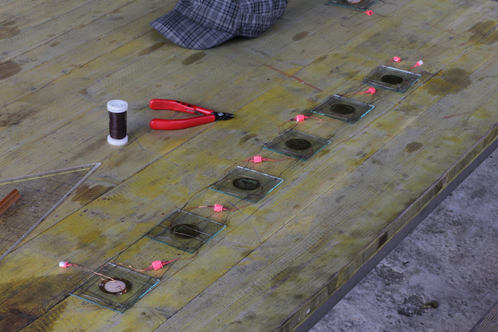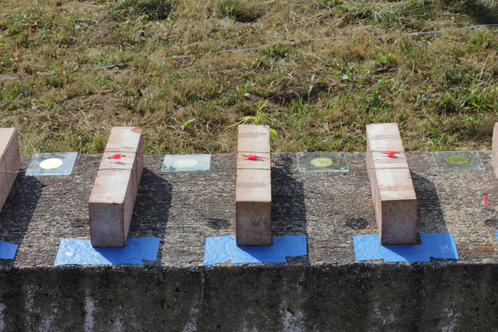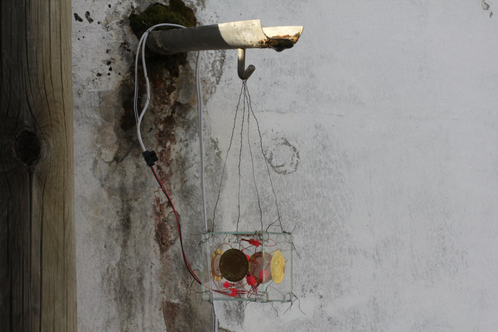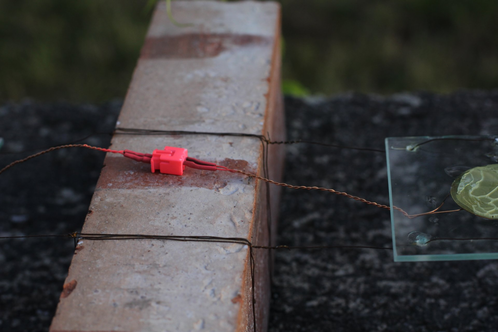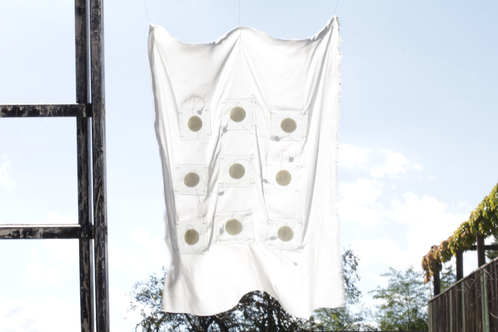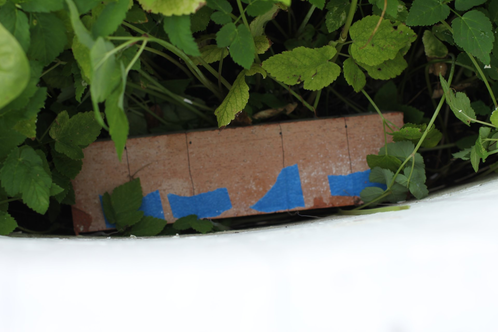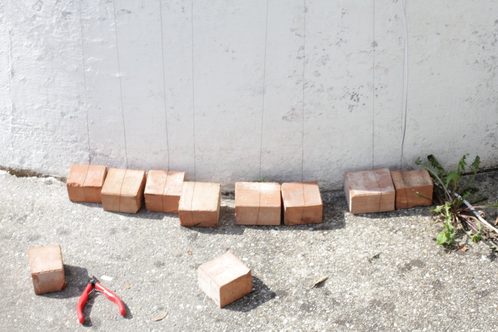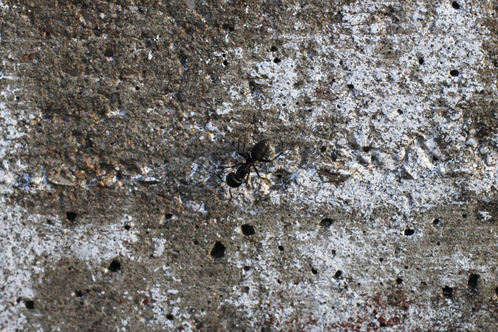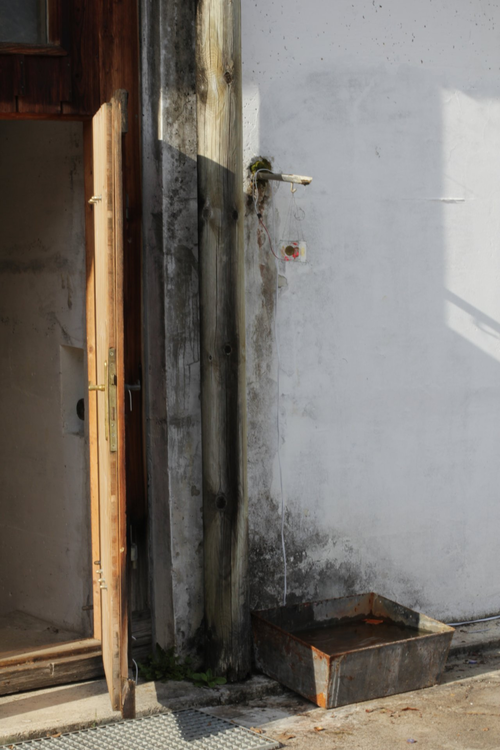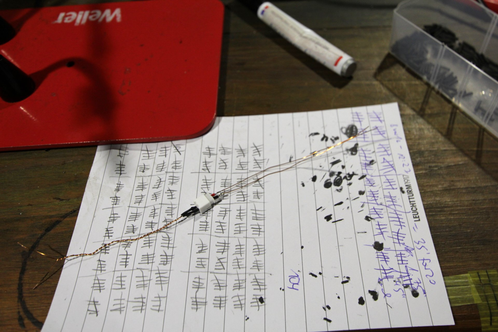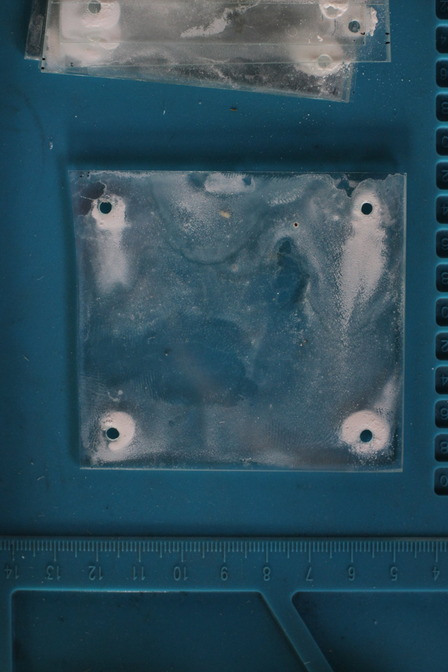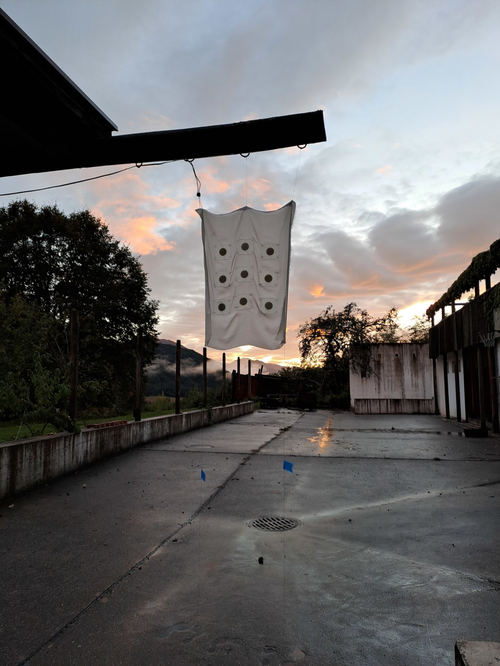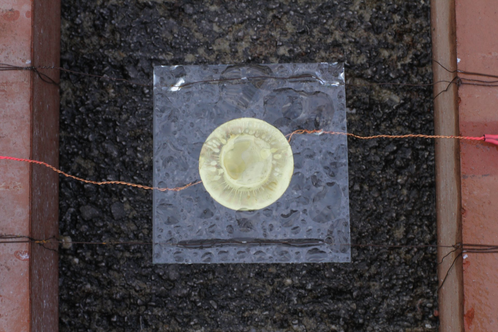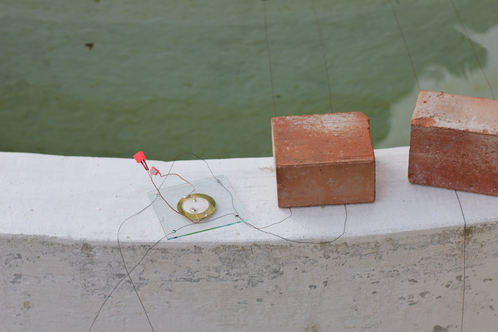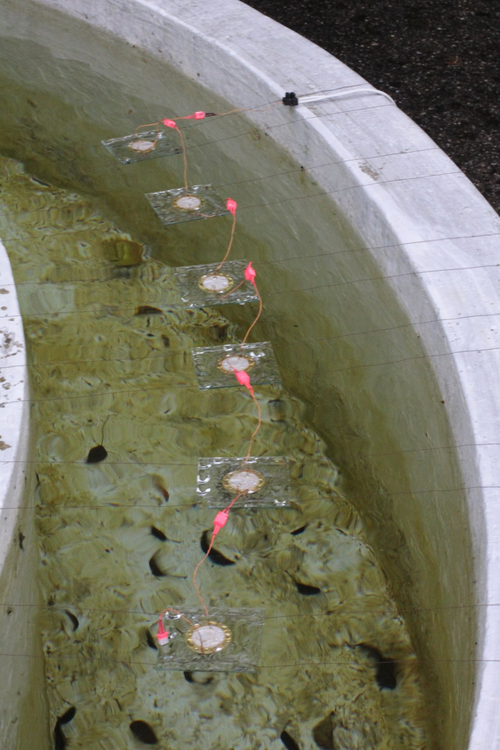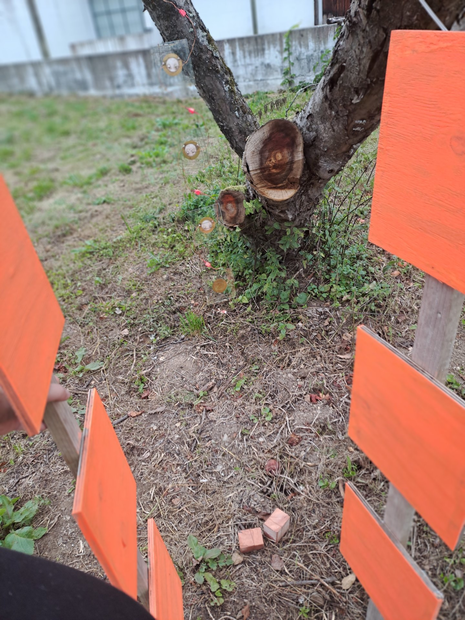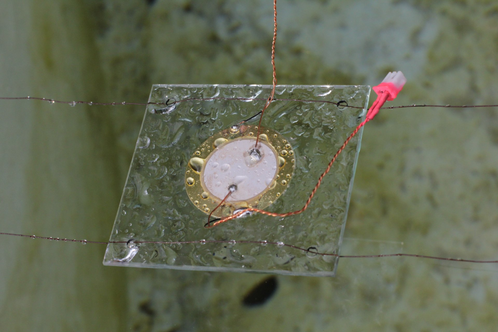{240925}
Between 29 August and 12 September, we had the opportunity to work at the Hoke Werkhaus as our “intensive weeks” of the third and final interval with the simularr project. We were blessed with fabulous weather of the late summer, and consequently I worked mostly on the terrace of the compound. In a marathon session, I had prepared two aluminium cases filled with cut glass slides and prepared piezos, this time deciding to work with them in different modular configurations and without the support of the wooden clichés that actually gave name to the project. (This was described as the “weave reticule” in a previous post). The glass slides of the new set were chosen to have a size of 70 x 74 mm (cutting A4 glass plates into 12 slides). The piezos were prepared with 10cm copper wires that ended in fire red JST connectors, so that I could align the slides quite freely and in different ways. I was excited to try drilling the glass, instead of continuing with the fiddly wire frames. At the wood workshop, I got a good drill, and I brought a glass drill bit. With a bit of work and getting used to it, I managed to make quite good holes, and in a process that was at least twice as fast as making the wire frames. The drill bits get blunt only after a few dozen holes, so I quickly ordered a whole bunch of new drill bits.
Over the approximately two weeks, I tried out six different configurations that would each be driven by one independent sound from an amplifier channel. I began with a 3 x 3 grid hanging near the tables on the terrace. This proved to be a good move, as the weather became more rainy, and this position was quite sheltered. On the other hand, many of the other configurations resisted the rain quite a bit, and apart from some beautiful rust appearing on iron wires, they did not seem to have any electrical faults.
A prominent element on the terrace was a round water basin that was constantly filled by a pipe. I provided a static sonic background to the environment, also the other artists were repeatedly drawn to it, experimenting with floating objects and hydrophones. I was fascinated by the correspondence between water and glass, and thought a while about the possibility to have the slides swim on the water surface. This would have required some light objects underneath, and eventually I decided to have them hovering over the water, by spanning iron wires across the white stone walls of the basin. I found red clay bricks that could work to keep the wires tight, and this created another fabulous correspondence between bricks and iron wire.
I wanted to expand into the grass area next to the terrace. Many trees of all sorts of fruit were planted here. I chose one tree with an inviting low branch to hang a set of six slides. I started hanging them as rhombi, but it looked too ornamental and was prone to too much movement in the wind, so I switched to orthogonal hanging with two wires between adjacent slides. An interesting acoustical situation was created—if you stand orthogonal to the plane of the slides, the sound is very faint, but if you move slightly to the left or right, into the plane of the slides, the sound would appear very directly. Later during the intensive weeks, we began to have strong winds. I had built and thought about all the configurations with the sunny wind-still weather in mind, and now I feared that the slides would come down or break with the storm. I reused the idea of securing the vertical configuration on the ground by adding two more wires that were spanned by the red clay bricks. This construction survived to the end, and the rain created beautiful trails of oxidation running down the glass slides.
A fourth configuration was placed on a low wall that separated the terrace from the grass area. I am very interested in the horizontal display of the slides, so a construction similar to the water basin was made, with an interleaved structure of clay bricks and slides.
The fifth configuration picked up a piece of cloth that was contributed by simularr's incoming artist-researcher Andrea Bakketun to our “material exchange table”. Andrea is working a lot with erratically moving objects and materials, such as cloth suspended in wind. I used a piece as a sort of flag, attaching nine slides with wires. The upcoming storm was again counteracted by weighing down the flag with clay bricks. I attached some blue tape markers to avoid that people ran into the wires.
The sixth and last configuration came at the very end. It occurred to me that the flat surfaces could be completed by a volumetric object. I built a six faced glass cube (now I had to use square slides, so they were slightly smaller at 70 x 70 mm), and found a place near an entrance door that led down to our “reading room”. The cube was hanging from a rainwater pipe, with traces of water occasionally touching the cube as they went down into a metal basin.
